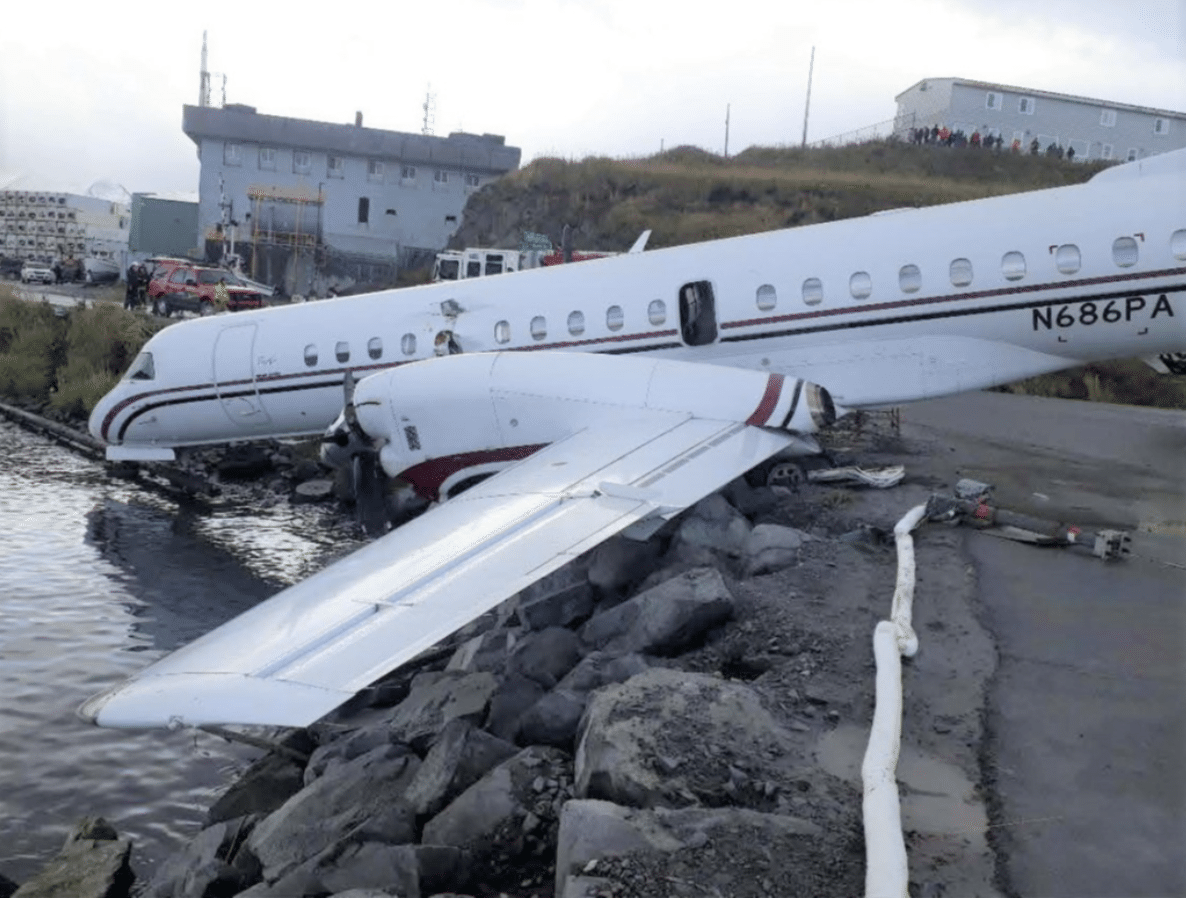A passenger turboprop airplane overran a runway because its braking system was compromised by incorrectly wired anti-skid sensors, the National Transportation Safety Board determined in a public meeting Tuesday. On Oct. 17, 2019, PenAir flight 3296, a Saab SA-2000, overran the runway during a landing attempt in Unalaska, Alaska. The airplane crashed through the perimeter fence, crossed a road, and came to rest on shoreline rocks on the edge of Dutch Harbor. One passenger was killed; another was seriously injured; and eight sustained minor injuries, mostly during the evacuation. The flight crew, the flight attendant, and the other 29 passengers were uninjured.
“Even though the airplane, the pilot, the weather and federal oversight all had a role in this tragedy, it was entirely preventable,” said NTSB Chair Jennifer L. Homendy. “The brake system should have been designed to protect against human error during maintenance, the pilot shouldn’t have landed on a runway with such a strong tailwind and federal regulators should have considered the runway safety area dimensions when authorizing the airline to fly the Saab 2000 into that airport.”
A post-accident examination of the airplane revealed sensors for the anti-skid system had been incorrectly wired during an overhaul of the left main landing gear. This configuration led to the skidding and bursting of one tire and the subsequent release of brake pressure on two of the three remaining wheels. Investigators determined the loss of effective braking on three of the four main landing gear wheels prevented the flight crew from stopping on the runway.
Noting that systems should be engineered to prevent human errors that could occur during maintenance, the NTSB recommended Saab redesign the landing gear wheel speed sensor wiring to reduce the probability of a miswiring during maintenance operations. Because the captain elected to land on a runway with a reported tailwind that exceeded the airplane manufacturer’s operating limit, the airplane touched down with a higher-than-normal groundspeed. The NTSB said the decision to land with such a tailwind was “intentional, inappropriate, and indicative of plan continuation bias.”
The NTSB also found that when the Federal Aviation Administration approved PenAir to fly in and out of the Unalaska airport with the Saab 2000, they did not recognize that the safety area beyond the end of the runway did not conform to the recommended safety criteria for an airplane in that design category.
The NTSB issued six recommendations to the FAA, three to the European Union Aviation Safety Agency and one to Saab. The executive summary, probable cause, findings, and safety recommendations are in the report abstract available on the investigation web page.
The final report will be published on the NTSB website in several weeks. The accident web page, including links to an investigative update, the public docket and related news releases, is available.
